
7 minute read
Amakhosi Safari Lodge, a haven for cheetah
AMAKHOSI SAFARI LODGE
...a haven for cheetah
Advertisement
words & pics Rowan Buhrmann
CONSERVATION SUCCESS STORY
Ihad heard about cheetah cubs that romp with abandon, elephants that get so close that you can almost touch them, and rhino that munch grass sedately as you watch from nearby. That the Mkhuze River runs through it, and that the views from the rocky hilltops are spectacular. That the food is delicious, and the people are amazing...
My parents had always come back from Amakhosi Safari Lodge, raving about their amazing time away. Hearing their stories about the incredible wildlife sightings, the great birding and the delicious meals they dined on, planted Amakhosi firmly on my bucket list of places I had to visit, so I knew that it would be the perfect choice for our honeymoon – the perfect place to destress after the crazy rush that led up to our wedding.
The Amakhosi Safari Lodge, nestled snuggly along the banks of the Mkuze River, is one of KwaZulu-Natal’s hidden gems so we didn’t mind the early wake-up at all, both of us really excited to get into chill-mode for a few days. After a scenic four-hour drive from Durban, we arrived to find a herd of nyala grazing on the front lawn as we drove up to the reception. We received the warmest welcome and immediately felt at home.
The reception area opens up onto a stunning boma and deck, where we would be dining for the next few days. From here, we got to take in the breathtaking view of the very full Mkuze River, which clearly had hugely benefitted from the recent, unexpected rain that fell just before our visit.
We were in the honeymoon suite, a wonderfully private and luxurious space complete with its own splash pool – perfect for those hot Zululand afternoons. After settling in we headed back to the main lodge area, crossing paths with some nyala along the way, where we met our ranger, Jacques, and tracker, Jeremy, who prepped us for our first afternoon drive in the Amakhosi Private Game Reserve.
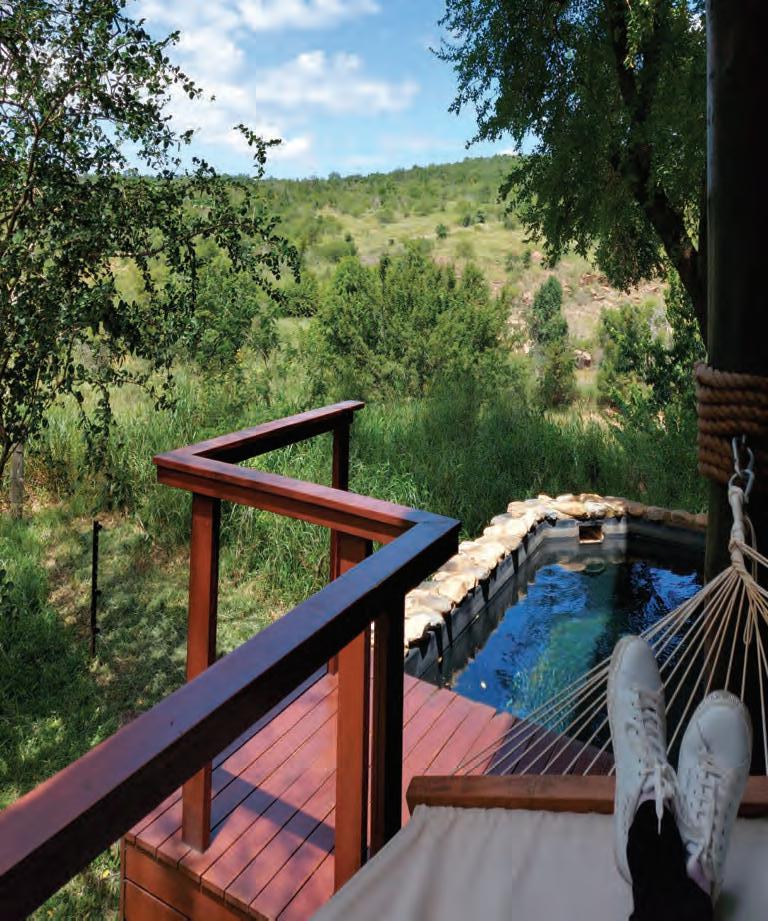
CONSERVATION SUCCESS STORY Although being a Big-5 Reserve, Amakhosi is so much more. As budding birders, we were pleasantly surprised by the diverse birdlife, and were impressed by Jeremy’s bird call mimicry skills and Jacques’s knowledge on the local species - and Jacques’ patience at stopping at every tiny bird we spotted!
We were treated to a closeup sighting of a mother rhino and her two adolescent calves, and after spending some time watching one of the big bull elephants having an evening shower, we set off in the hope of finding some more wildlife coming out to enjoy the cool late afternoon air.
Before long, we were in pursuit of a lioness that was sighted moving quickly in the dense bush. After some time searching, Jacques decided we should make our way through a densely vegetated path as a lastditch effort to spot her.
Suddenly, and very unexpectedly, Jeremy quietly whispers “Cheetah!” while pointing a finger into the bush just to the right of our vehicle. We could hardly believe our eyes! There, a mother cheetah was casually sitting in the short grass watching us, while her four cubs lay beside her. Jacques pulled the vehicle off the path for us to get a better view. The mother cheetah gave us a quick assessment, she seemed to realize we were not a threat, and to our amazement, lay right in front of the vehicle while her cubs took the opportunity to engage in some carefree play.
The cubs seemed totally unperturbed by our presence. One of them even took a quick break to check us out, before returning to play with his siblings. Play time ended abruptly with a quick chirp from their mother indicating it was time to go, and just like that, they disappeared into the bush.
We felt very spoilt to have had such an incredible sighting, especially after hearing that the global population of cheetah has been on a decline for many years. In Africa, cheetahs are now only found within 10% of their historical range and they are currently listed as ‘vulnerable’ according to the IUCN Red List of Threatened Species. Even more disheartening, recent data shows that this
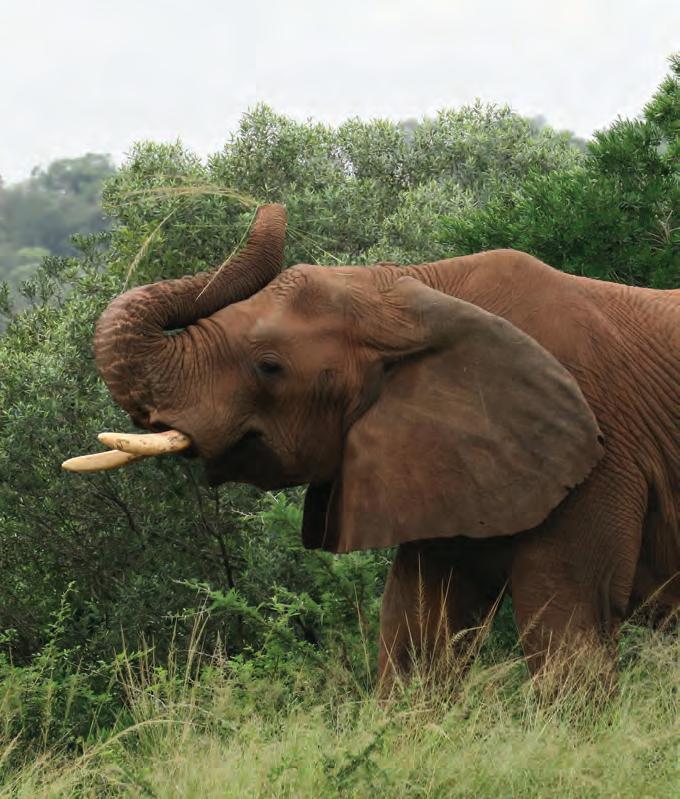
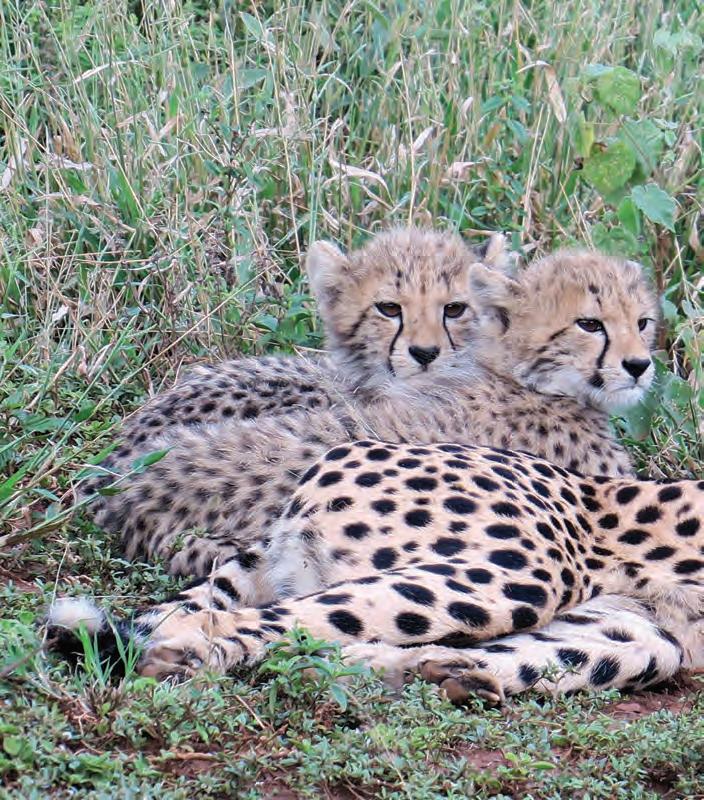
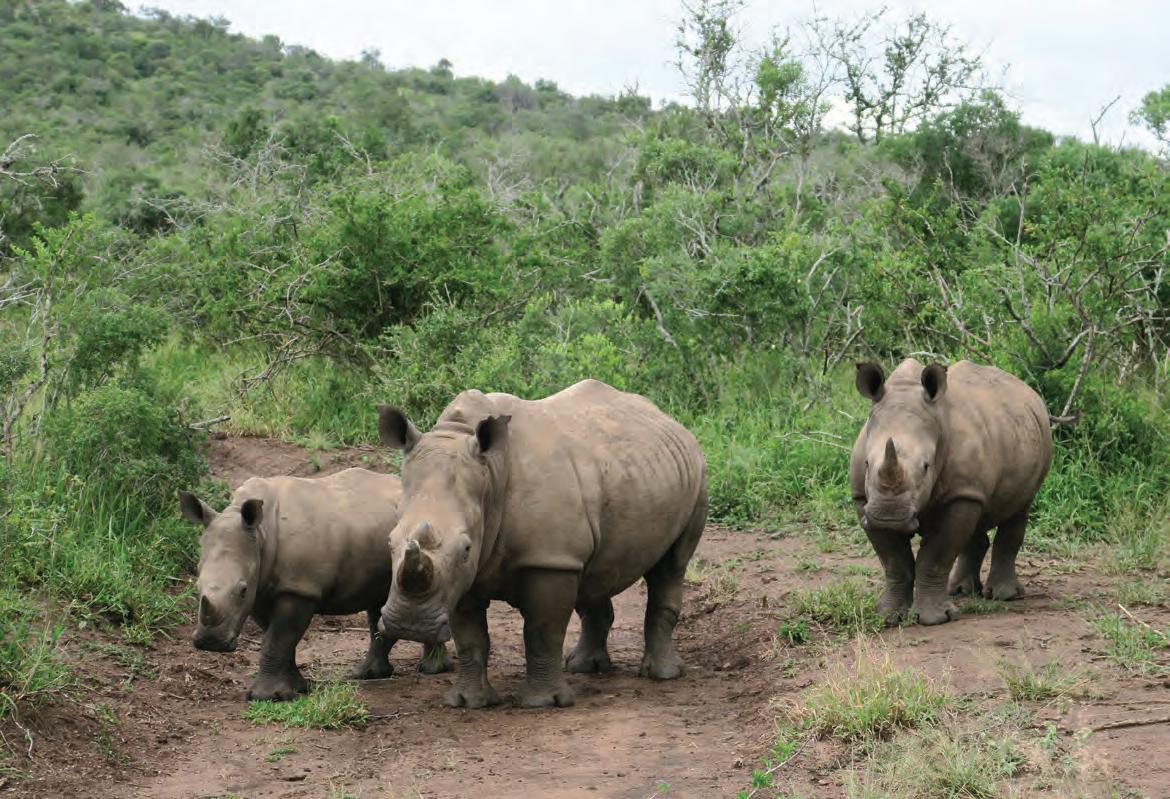
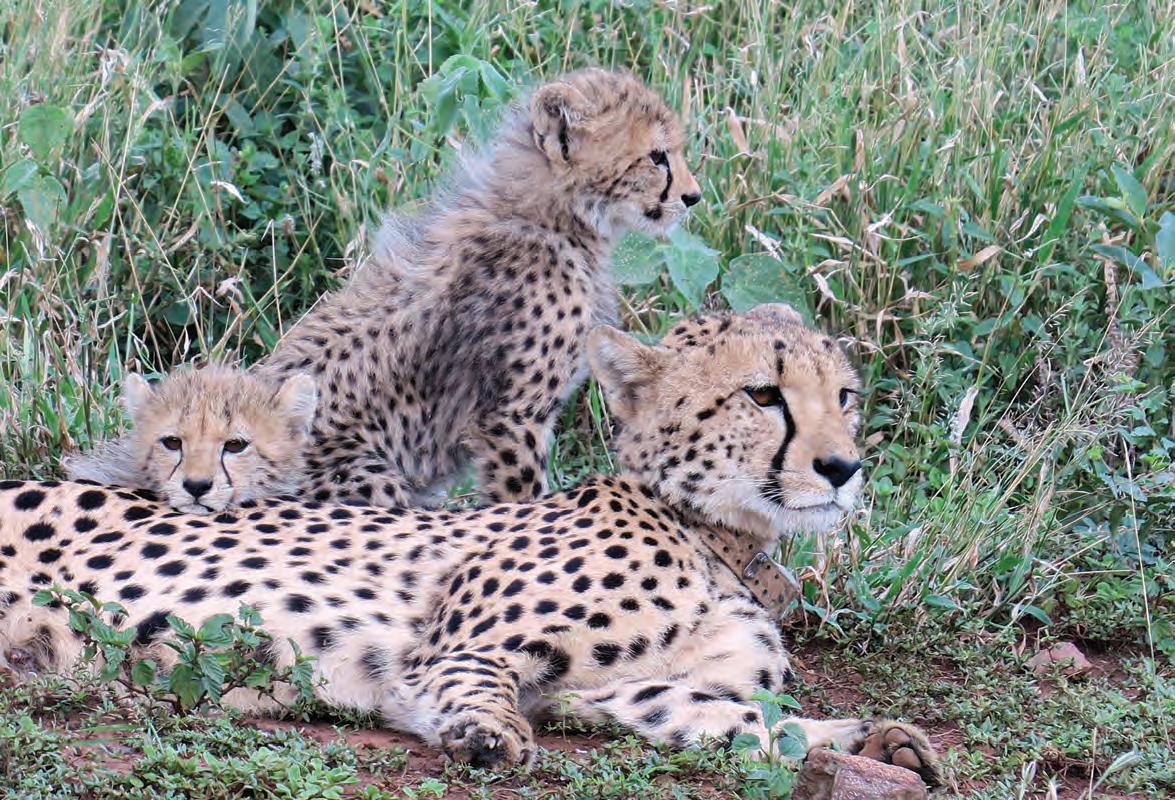
status should be amended to ‘endangered’. Through ongoing surveys, it has been estimated that the southern African cheetah population is less than 4 300 individuals, and of this, South Africa is home to around 1 300. The dwindling numbers, combined with the very real threat of this iconic cat species going extinct, sparked the need for something to be done.
The Endangered Wildlife Trust established the Cheetah Metapopulation Project in 2011. It recognized the important role that smaller wildlife reserves, such as Amakhosi, have in the protection of, and for the survival of, the cheetah species.
The project was developed to maintain a high level of genetic variability within the gene pool of South Africa’s cheetah population, thus reducing the chance of inbreeding within smaller reserves. This is achieved through the exchange of adult cheetahs between the participating reserves within the EWT Cheetah Metapopulation Project.
Today, there are 60 reserves throughout South Africa that are part of the project, and Amakhosi has been part of it all since the very beginning. To date, Amakhosi has sent two males and one female to participating reserves in the Eastern Cape and has exchanged one male for another from the Dinokeng Game Reserve in Gauteng. Amakhosi’s participation in the project has proved to be effective, as there have been two litters successfully born on the reserve since 2017.
Currently, Amakhosi is home to four adult cheetah: two males and two females. One of the females is from the first litter to be born on the reserve, and she has now established her own territory and could soon begin contributing to SA’s cheetah population as well.
While we did not get to see the other adult cheetahs during our time at Amakhosi, we were privileged enough to spot that same mother and her playful cubs on all three days of our stay. The sighting on our last afternoon drive was one we would never forget. Not many people are fortunate
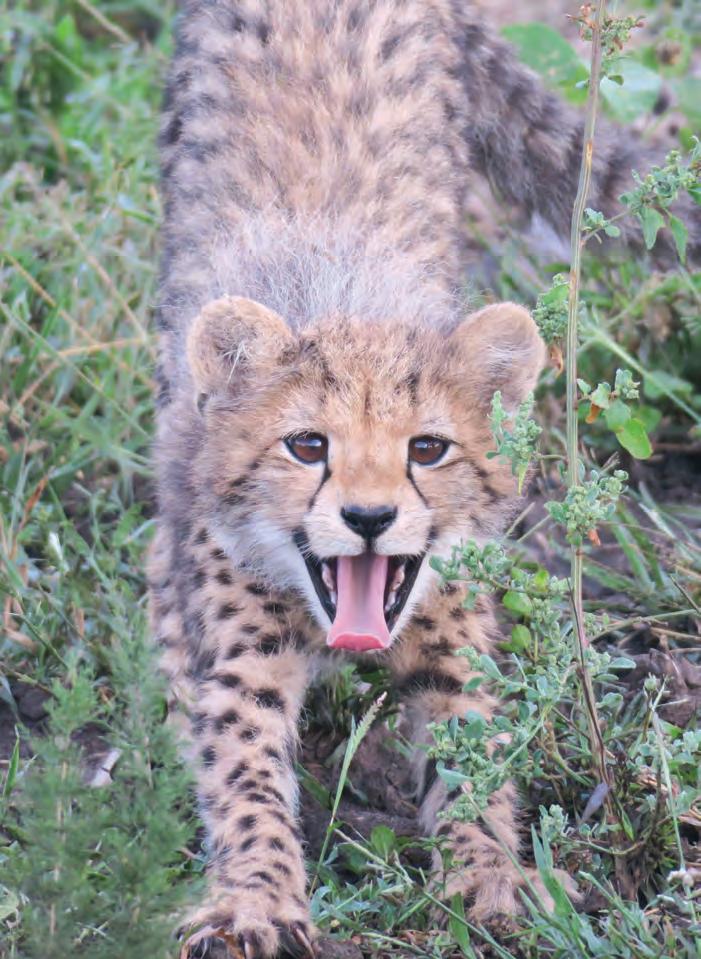
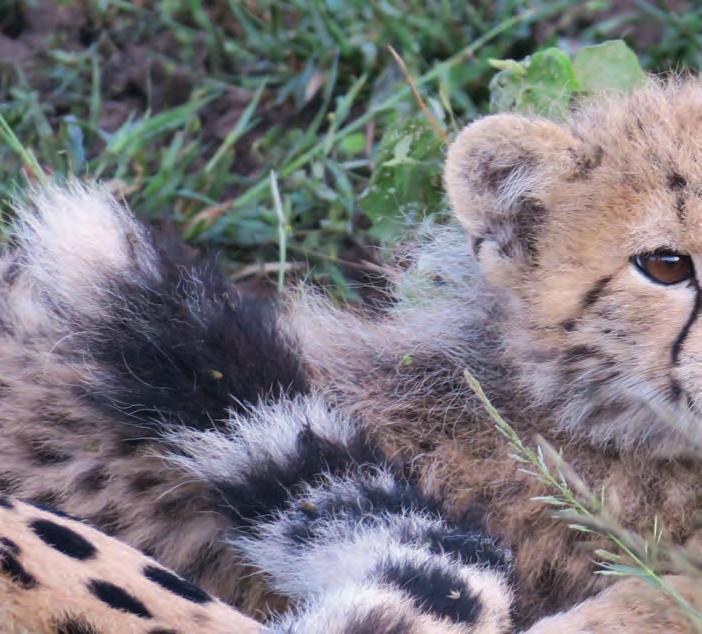
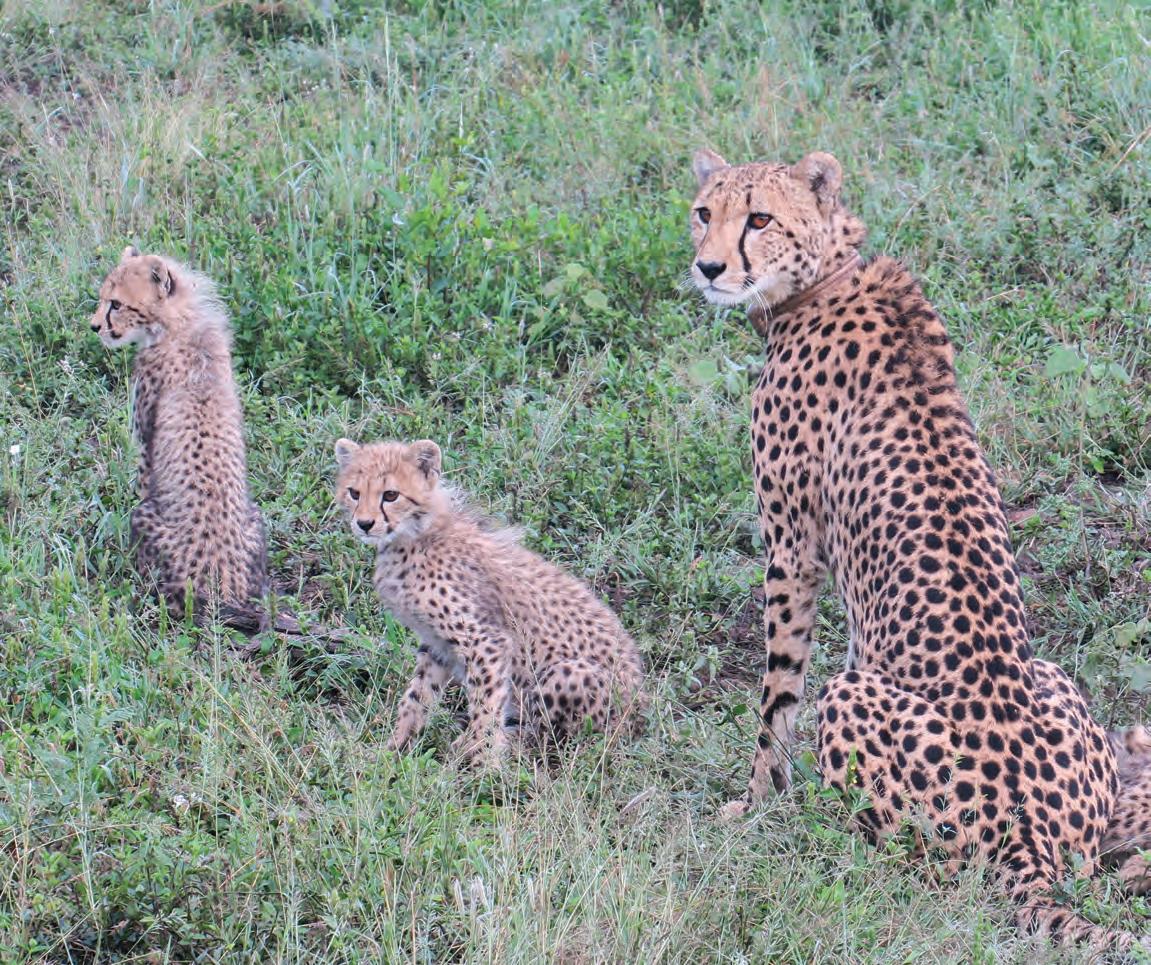
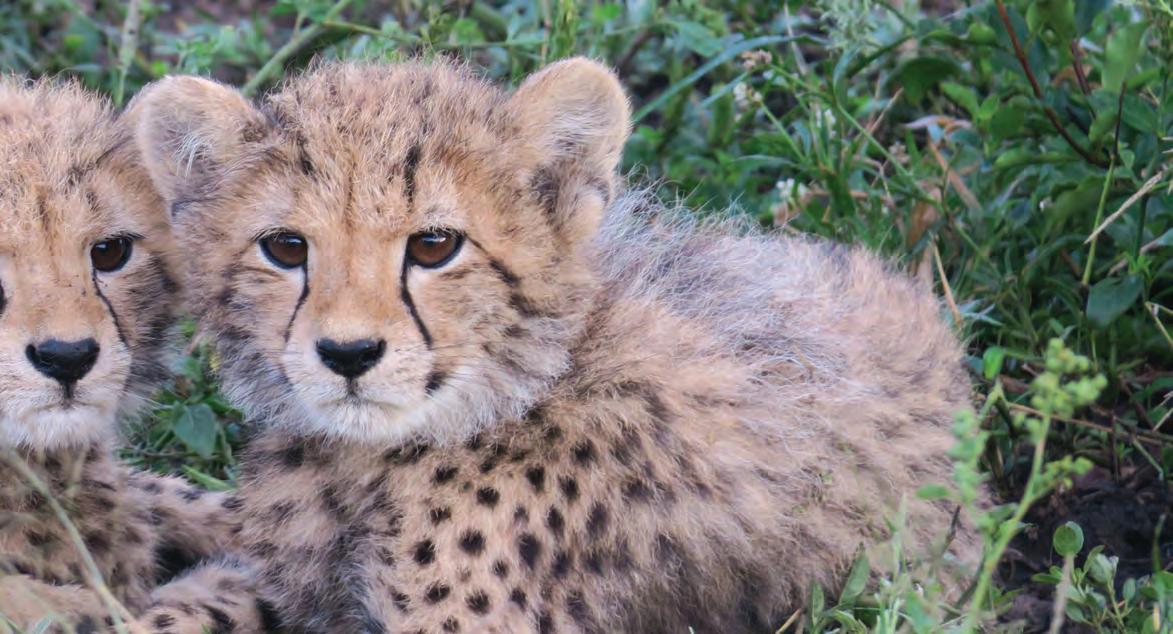
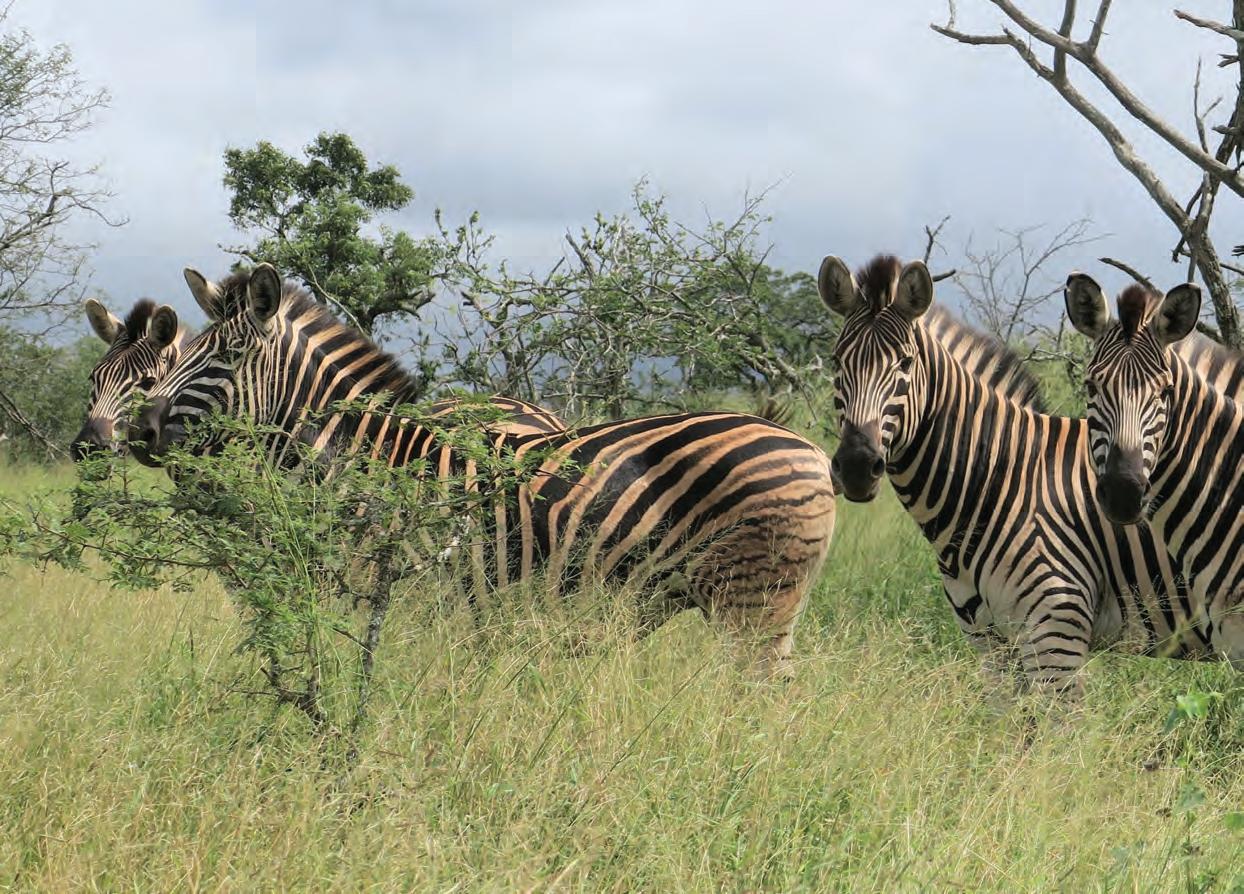

enough to see a cheetah in real life, and I would imagine that even fewer people are lucky enough to witness one hunt.
Daylight was slowly coming to an end. And we were slowly making our way towards a herd of buffalo at a waterhole, then suddenly Jeremy’s keen eye fell on the cheetah family once again. We watched as the cubs chased each other playfully and we were rather amused by an interaction between them and some rhino casually passing by, both parties seemingly startled by each other’s sudden appearance.
Meanwhile, a herd of zebra that had been making their way towards the waterhole had caught the attention of the mother. She chirped at her cubs who, rather obediently, hid themselves in the tall grass. We sat completely silent, holding our breath, as we watched this iconic predator stealthily stalking the zebra. She blended into her surrounding so well that we lost sight of her for a brief moment. Suddenly she made her move on the unsuspecting herd.
Unfortunately, this time her attempt was unsuccessful, but it surprised us to see how protective zebra can be when under threat! As she made her way back to find her cubs, she was pursued by a handful of zebras charging her down rather persistently. Thankfully, she stood her ground and was ultimately able to fend them off and get back to her cubs safely.
Learning of Amakhosi’s contribution to cheetah conservation made our trip that much more memorable as both my wife and I are biologists and have a deep understanding of the importance of conserving our natural environment and biodiversity – and every species counts! Through the collaboration of Amakhosi and other participating reserves with the EWT Cheetah Metapopulation Project, South Africa is the only country in Africa whose cheetah population has shown an increase in numbers over the past decade.
We thoroughly enjoyed our stay at the Amakhosi Safari Lodge, and Jacques and Jeremy made our game drive experiences truly memorable. Our cheetah encounters will be fondly remembered until the next time we are able to visit – where we are looking forward to witnessing a cheetah population that is continuing to flourish.
www.amakhosi.com











